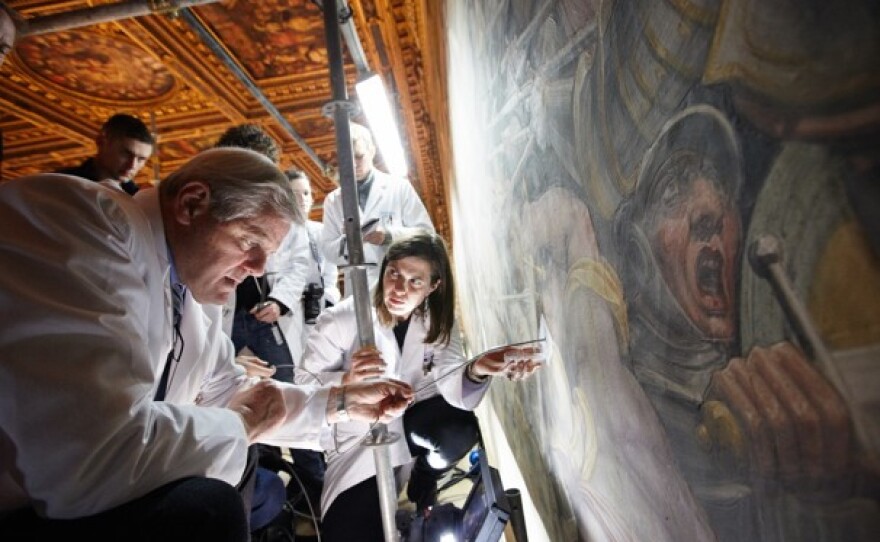There is new evidence that the da Vinci painting "The Battle of Anghiari" is buried behind another mural in a hall in the Palazzo Vecchio in Florence, Italy.
Seracini thinks the da Vinci was preserved by Renaissance painter Giorgio Vasari, who built a brick wall over it in 1563 and then painted his own mural, "The Battle of Marciano." Seracini has been trying to prove his theory for almost 40 years and now he has some encouraging evidence.
Seracini's research team includes members from the National Geographic Society (who are helping fund the research in return for rights to a television documentary) and scientists and engineers from the UC San Diego Center of Interdisciplinary Science for Art, Architecture and Archaeology (CISA3).
Together, they drilled into the Vasari mural using an endoscopic probe fitted with a camera. The procedure has attracted criticism for the damage it might do to the Vasari mural.
Through the drilling, they also found flakes of a red material that could be lacquer, as well as a beige material on the original wall that could have only been applied with a paint brush.
Seracini told Eurovision "the red lacquer is not a pigment usually used on murals, because it would not last, and it is expansive. The red lacquer is used for oil painting. And this element matches with Leonardo's plan to paint his 'Battle of Anghiari' with oil technique."
Researchers also confirmed the presence of an air gap between the brick wall on which Vasari painted his mural and the wall behind it. That discovery was previously made through the use of radar scans. No other location in the hall where the mural is located has this type of air gap.
In a press release issued today by UCSD's CISA3, Seracini said, “These data are very encouraging. Although we are still in the preliminary stages of the research and there is still a lot of work to be done to solve this mystery, the evidence does suggest that we are searching in the right place.”
Seracini is the only real-life character mentioned in Dan Brown's mega-hit novel, "The Da Vinci Code." In the book, he's the man who "unveils the unsettling truth" about Leonardo da Vinci.






